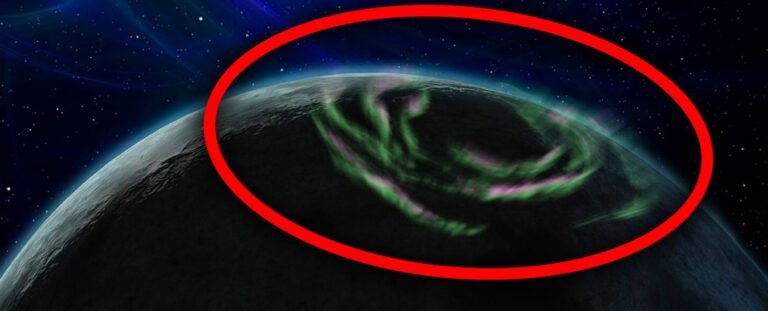Pulsar-Orbiting Planets Could Exhibit Unusual and Stunning Auroras
We have been fortunate enough to witness some extraordinary displays of aurora in recent months. These captivating lights are a result of charged particles from the Sun traversing through space and upon arrival, causing the gases in the atmosphere to emit a radiant glow.
Now, scientists speculate that even on exoplanets orbiting pulsars, we may encounter aurora phenomena, which could potentially be observable.
Pulsars are the remnants of massive stars that have reached the end of their lifespan. Throughout most of a star’s existence, it synthesizes increasingly heavier elements within its core, with the outward pressure from thermonuclear reactions balancing the force of gravity.
As the star progresses in its evolution, gravity eventually triumphs, leading to the star collapsing in on itself and generating a shockwave that tears it apart…almost completely. What remains is a rapidly rotating, colossal neutron star that emits powerful bursts of radiation. As this neutron star rotates, the radiation beam sweeps across space, giving rise to what we refer to as pulsars.

The initial discovery of exoplanets occurred in the vicinity of pulsars. By analyzing the radiation pulses emitted by the host star, astronomers detected slight irregularities in their otherwise precise rhythm. The cause of these irregularities was found to be planets orbiting the pulsar.
In a recent publication on 7 December, a group of Swiss scientists put forward a proposal suggesting that exoplanets orbiting pulsars could potentially experience aurora by simulating their magnetic environment.
While the majority of pulsars travel through space without any companions, a small fraction, approximately 0.5 percent, are believed to have planetary companions. The paper delves into the efforts made to simulate the magnetic interactions between pulsars and their planets in order to estimate the amount of electromagnetic radiation emitted.
The simulations primarily focused on millisecond pulsars and the planets orbiting them, specifically examining the potential outcomes for planet detection through radio emissions.
The study investigated two planetary candidates that lacked their own magnetic field: those with conducting surfaces and those with electrically uncharged surfaces. The density of radio flux, which measures the flow of energy in or out and is quantified in Jansky units, ranged from approximately 0.1mjy to 30 mjy (mill-jansky). The team concluded that the frequency used would be above the threshold for absorption by plasma, yet below the level that would be obstructed by the ionosphere.
The team’s simulations yielded a positive conclusion, affirming that current radio telescope technology can indeed observe planets around millisecond pulsars. Both LOFAR (Low Frequency Array) and the future developments of SKA (Square Kilometre Array) have the capability to detect these planets, with minimum sensitivities of approximately 0.1mjy and 0.001mjy respectively. Additionally, there is a possibility of detecting any aurora present in the system.
This article is republished from sciencealert under a Creative Commons license. Read the original article.
Do not forget to share your opinion with us to provide you with the best posts !




0 Comments